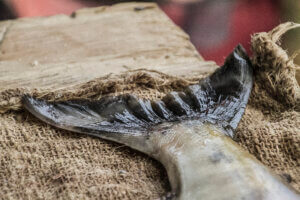By Gale K. Vick, Fairbanks Fish & Game Advisory Committee Member
 Wild salmon are Alaska’s greatest natural legacy. While Alaska’s wild salmon are a renewable resource, we now know they are not inexhaustible.
Wild salmon are Alaska’s greatest natural legacy. While Alaska’s wild salmon are a renewable resource, we now know they are not inexhaustible.
For millennia, wild salmon have adapted to fluctuating environmental conditions all over the northern hemisphere. Whole ecosystems adapted with salmon. Salmon-rich Indigenous populations fit into that schematic because their impact on the salmon population has been minimal. But the abundance and genetic biodiversity of both Pacific and Atlantic salmon became threatened with industrialization and subsequent large-scale human intervention, a situation that has devolved so much that some stocks of salmon may never recover.
Especially Chinook. All over Alaska, western Canada and the Pacific Northwest, king salmon are in various stages of being threatened or endangered. In Alaska, our tragedy is the loss of big Chinook genetics. We may never get those mammoth Chinook back. There are other salmon species also at risk. The majority of fault lies with cumulative human impact and our unwillingness to reduce or eliminate human-created stressors so that salmon can adapt to environmental changes on their own.
Not being able to do a lot about environmental conditions should not exempt us from doing what we can about human activity. We need continuing research to help us further understand environmental impacts and restoration methods, and we need simultaneous and immediate action on human-caused impacts.
The Yukon River is ground zero in this effort. At the 2024 January meeting of the Yukon River Panel in Whitehorse, YT, Canada, members from both the Canadian and U.S. delegations were notified of an “Agreement” between the U.S. and Canada that is a crisis intervention of the sort that should have happened 20 years ago. Hindsight notwithstanding, now we must make decisions where we each fit into a rebuilding plan.
In an issue of Alaska Law Review, Connor Sakati writes, “We can no longer manage resources in isolation. As with salmon, many regulatory structures govern a single resource’s use without a comprehensive view of the resource’s broader ecology. Ecosystem-based management is a partial solution to this problem in the fisheries context; more broadly, regulatory frameworks should strive towards comprehensive and ecosystem-wide management.”
While learning about in-river restoration methods is a process for all of us, utilizing traditional knowledge and modern science helps develop a synthesis of ideas to put into practice. Stakeholders, Tribes, advisory committees, scientists and others are in the early stages of discussing joint plans that exceed the parameters and expectations of agencies who are tied to their own jurisdictions. Agencies cannot do this alone; management practices absolutely need to change.
In a 2018 paper, “The Failure of Wild Salmon Management”, world-renowned salmon scientists note the failure of salmon management to rebuild and sustainably manage our wild salmon populations. They argue that to correct course: “management policies and practices related to salmon need to become place-based. Key changes in management practices required to achieve place-based management include requiring that fishing occur closer to rivers of origin where particular populations can be identified with high precision, requiring that fishing gear be capable of releasing (with very low post release mortality) non-target species and populations, and managing harvest to ensure that spawning escapements in most years exceed levels that would produce maximum sustainable yield…”
We can’t grow our way out of this crisis. Hundreds of peer-reviewed papers illustrate that hatchery production has likely exacerbated rather than helped wild salmon loss. Hatchery and streamside enhancement are both costly ventures that have not shown success for wild stock over time. But we can eliminate some major obstacles.
Coalitions are in various stages of addressing these challenges. So far, here is what we know we should be doing.
Marine Salmon
Greatly reduce or eliminate bycatch and intercept of Chinook, chum and coho stocks; reduce or eliminate Alaska hatchery production; and negotiate for reduction of Asian hatchery releases.
In-River Salmon
Eliminate in-river bycatch of threatened stocks; monitor escapement goals; continually monitor and clean out or replace dysfunctional fish stream crossing culverts; utilize non-destructive gear types; eliminate any unnecessary harvest or handling of fish that need to reach spawning grounds; keep waterways free of toxic chemicals; avoid disturbance of spawning and wintering habitat; and use local and traditional knowledge and community-based monitoring to provide co-stewardship opportunities.
With the multitude of impacts facing wild Alaskan salmon and many stocks in severe decline, our mantra should be both “give salmon a chance” as well as “every fish counts.” That means getting out of their way, keeping adult in-migration and smolt out-migration passage non-intervened, and providing healthy habitat. In short, doing as much as humanly possible to help wild salmon rebuild themselves.
